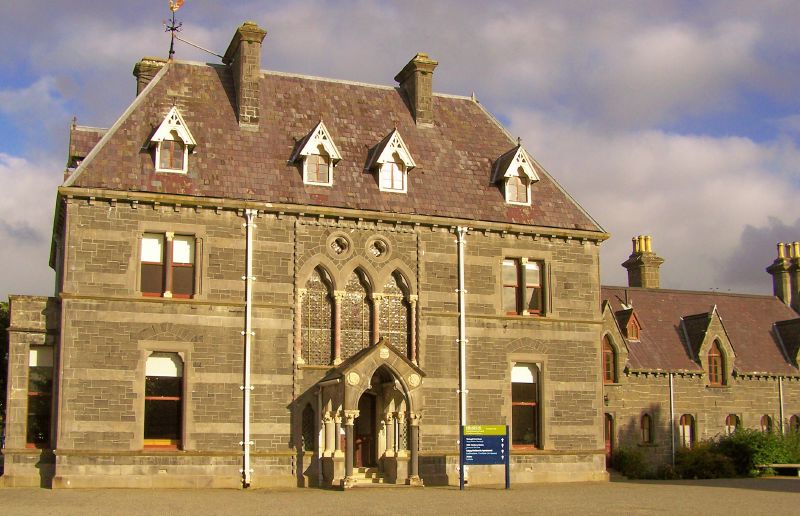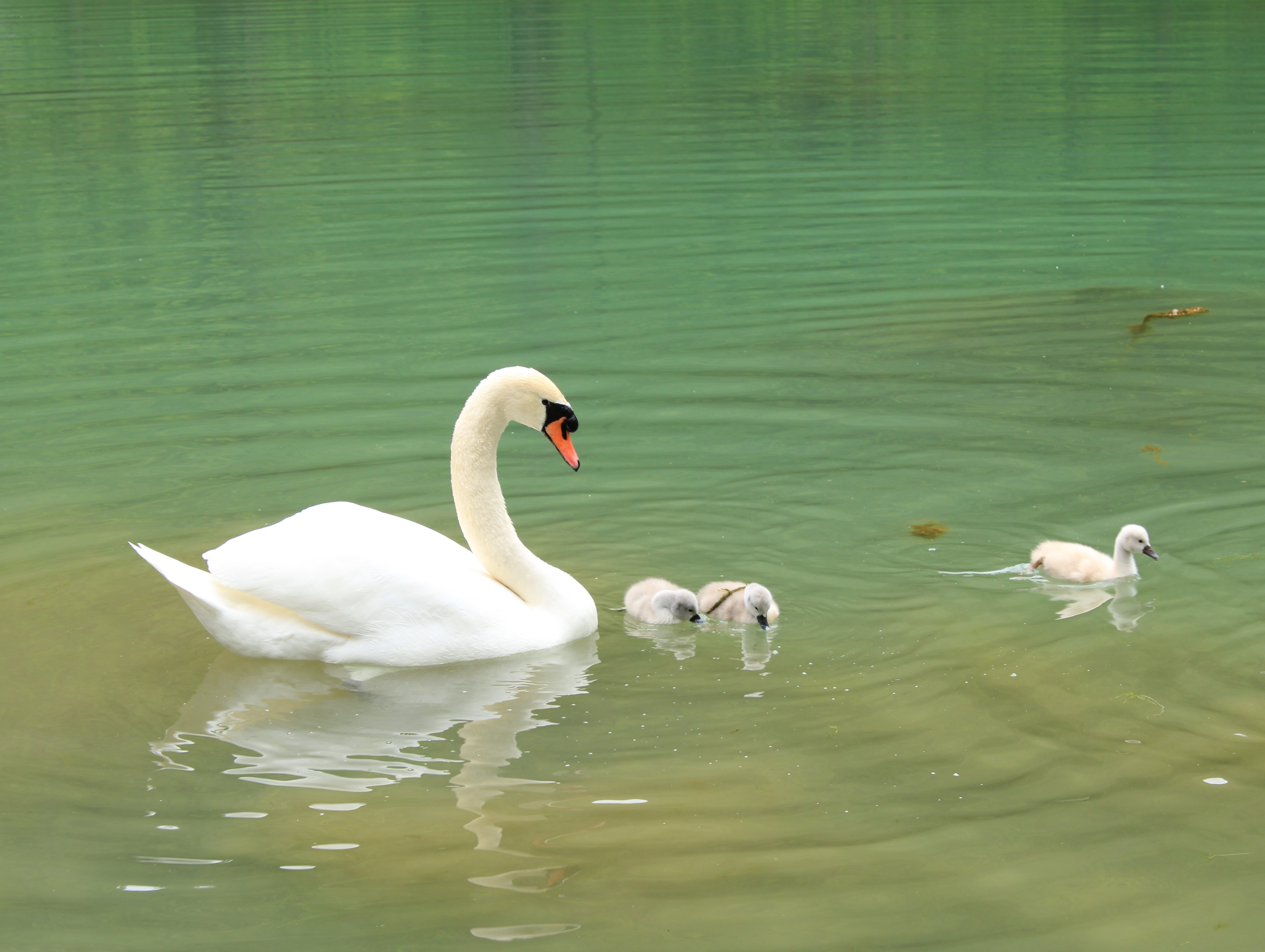|
Quill
A quill is a writing tool made from a moulted flight feather (preferably a primary wing-feather) of a large bird. Quills were used for writing with ink before the invention of the dip pen/metal-Nib (pen), nibbed pen, the fountain pen, and, eventually, the ballpoint pen. As with the earlier reed pen (and later dip pen), a quill has no internal ink reservoir and therefore needs to periodically be dipped into an inkwell during writing. The hand-cut goose quill is rarely used as a Western calligraphy, calligraphy tool anymore because many papers are now derived from Pulp (paper), wood pulp and would quickly wear a quill down. However, it is still the tool of choice for a few scribes who have noted that quills provide an unmatched sharp stroke as well as greater flexibility than a steel pen. Description The shaft of a flight feather is long and hollow, making it an obvious candidate for being crafted into a pen. The process of making a quill from a feather involves Curing (chemistr ... [...More Info...] [...Related Items...] OR: [Wikipedia] [Google] [Baidu] |
Nib (pen)
A nib is the part of a quill, dip pen, fountain pen, ball point, or stylus which comes into contact with the writing surface in order to deposit ink. Different types of nibs vary in their purpose, shape and size, as well as the material from which they are made. History Quill The quill replaced the reed pen across Europe by the Early Middle Ages and remained the main writing tool of the West for nearly a thousand years until the 17th century. Quills are fashioned by cutting a nib into the end of a feather obtained from a fairly large bird, such as a goose, traditionally from its left wing. A quill has the advantage of being more durable and more flexible than a reed pen, and it can also retain ink in the hollow shaft of the feather, known as the calamus, allowing more writing time between ink dippings. The quill was in common use until the early 19th century and the advent of the metal nib. For business purposes, the quill was fairly quickly overtaken; however, it remains popul ... [...More Info...] [...Related Items...] OR: [Wikipedia] [Google] [Baidu] |
Barb (feather)
Feathers are epidermis (zoology), epidermal growths that form a distinctive outer covering, or plumage, on both Bird, avian (bird) and some non-avian dinosaurs and other archosaurs. They are the most complex integumentary structures found in vertebrates and an example of a complex evolutionary novelty. They are among the characteristics that distinguish the extant Aves, birds from other living groups. Although feathers cover most of the bird's body, they arise only from certain well-defined tracts on the skin. They aid in flight, thermal insulation, and waterproofing. In addition, coloration helps in communication and crypsis, protection. The study of feathers is called plumology (or plumage science). People use feathers in many ways that are practical, cultural, and religious. Feathers are both soft and excellent at trapping heat; thus, they are sometimes used in high-class bedding, especially pillows, blankets, and mattresses. They are also used as filling for winter clothi ... [...More Info...] [...Related Items...] OR: [Wikipedia] [Google] [Baidu] |
Writing Tool
A writing implement or writing instrument is an object used to produce writing. Writing consists of different figures, lines, and or forms. Most of these items can be also used for other functions such as painting, drawing and technical drawing, but writing instruments generally have the ordinary requirement to create a smooth, controllable line. Another writing implement employed by a smaller population is the stylus used in conjunction with the slate for punching out the dots in Braille. Autonomous An autonomous writing implement is one that cannot "run out"—the only way to render it useless is to destroy it. Without pigment The oldest known examples were created by incising a flat surface with a rigid tool rather than applying pigment with a secondary object, e.g., Chinese jiaguwen carved into turtle shells. However, this may simply represent the relative durability of such artifacts rather than truly representing the evolution of techniques, as the meaningful application ... [...More Info...] [...Related Items...] OR: [Wikipedia] [Google] [Baidu] |
Fountain Pen
A fountain pen is a writing instrument that uses a metal nib (pen), nib to apply Fountain pen ink, water-based ink, or special pigment ink—suitable for fountain pens—to paper. It is distinguished from earlier dip pens by using an internal reservoir to hold ink, eliminating the need to repeatedly dip the pen in an inkwell during use. The pen draws ink from the reservoir through a feed to the nib and deposits the ink on paper via a combination of gravity and capillary action. Filling the reservoir with ink may be achieved manually, via the use of an eyedropper or syringe, or via an internal filling mechanism that creates suction (for example, through a piston mechanism) or a vacuum to transfer ink directly through the nib into the reservoir. Some pens employ removable reservoirs in the form of pre-filled ink cartridges. History Early prototypes of reservoir pens According to Qadi al-Nu'man al-Tamimi () in his ''Kitab al-Majalis wa 'l-musayarat'', the Fatimid caliph Al-Mu'izz ... [...More Info...] [...Related Items...] OR: [Wikipedia] [Google] [Baidu] |
Goose
A goose (: geese) is a bird of any of several waterfowl species in the family Anatidae. This group comprises the genera '' Anser'' (grey geese and white geese) and '' Branta'' (black geese). Some members of the Tadorninae subfamily (e.g., Egyptian goose, Orinoco goose) are commonly called geese, but are not considered "true geese" taxonomically. More distantly related members of the family Anatidae are swans, most of which are larger than true geese, and ducks, which are smaller. The term "goose" may refer to such bird of either sex, but when paired with "gander", "goose" refers specifically to a female one ("gander" referring to a male). Young birds before fledging are called goslings. The collective noun for a group of geese on the ground is a gaggle; when in flight, they are called a skein, a team, or a wedge; when flying close together, they are called a plump. Etymology The word "goose" is a direct descendant of Proto-Indo-European ''*ǵʰh₂éns''. In Germanic lang ... [...More Info...] [...Related Items...] OR: [Wikipedia] [Google] [Baidu] |
Moulting
In biology, moulting (British English), or molting (American English), also known as sloughing, shedding, or in many invertebrates, ecdysis, is a process by which an animal casts off parts of its body to serve some beneficial purpose, either at specific times of the year, or at specific points in its life cycle. In medieval times, it was also known as "mewing" (from the French verb "muer", to moult), a term that lives on in the name of Britain's Royal Mews where the King's hawks used to be kept during moulting time before becoming horse stables after Tudor times. Moulting can involve shedding the Epidermis (skin), epidermis (skin), pelage (hair, feathers, fur, wool), or other external layer. In some groups, other body parts may be shed, for example, the entire exoskeleton in arthropods, including the wings in some insects. Examples In birds In birds, moulting is the periodic replacement of feathers by shedding old feathers while producing new ones. Feathers are dead struct ... [...More Info...] [...Related Items...] OR: [Wikipedia] [Google] [Baidu] |
National Museum Of Ireland
The National Museum of Ireland () is Ireland's leading museum institution, with a strong emphasis on national and some international archaeology, Irish history, Irish art, culture, and natural history. It has three branches in Dublin, the archaeology and natural history museums adjacent on Kildare Street and Merrion Square, and a newer Decorative Arts and History branch at the former Collins Barracks, and the Country Life museum in County Mayo. History Predecessors The National Museum of Ireland descends from the amalgamation of parts of the collections of a number of Dublin cultural institutions from the 18th and 19th centuries, including primarily the Royal Dublin Society (RDS) and the Royal Irish Academy (RIA). The earliest parts of the collections are largely geological and mineralogical specimens, which the RDS collected as a means to improve the knowledge and use of such resources in Ireland. The establishment of the museum collections is generally deemed to have ... [...More Info...] [...Related Items...] OR: [Wikipedia] [Google] [Baidu] |
Right-handed
In human biology, handedness is an individual's preferential use of one hand, known as the dominant hand, due to and causing it to be stronger, faster or more Fine motor skill, dextrous. The other hand, comparatively often the weaker, less dextrous or simply less subjectively preferred, is called the non-dominant hand. In a study from 1975 on 7,688 children in US grades 1–6, left handers comprised 9.6% of the sample, with 10.5% of male children and 8.7% of female children being left-handed. Overall, around 90% of people are right-handed. Handedness is often defined by one's writing hand. It is fairly common for people to prefer to do a particular task with a particular hand. Cross-dominance, Mixed-handed people change hand preference depending on the task. Not to be confused with handedness, ambidexterity describes having equal ability in both hands. Those who learn it still tend to favor their originally dominant hand. Natural ambidexterity (equal preference of either hand) d ... [...More Info...] [...Related Items...] OR: [Wikipedia] [Google] [Baidu] |
Swan
Swans are birds of the genus ''Cygnus'' within the family Anatidae. The swans' closest relatives include the goose, geese and ducks. Swans are grouped with the closely related geese in the subfamily Anserinae where they form the tribe (biology), tribe Cygnini. Sometimes, they are considered a distinct subfamily, Cygninae. They are the largest Anseriformes, waterfowl and are often among the largest Bird flight, flighted birds in their range. There are six living and many extinct species of swan; in addition, there is a species known as the coscoroba swan which is no longer considered one of the true swans. Swans usually mate for life, although separation sometimes occurs, particularly following nesting failure, and if a mate dies, the remaining swan will take up with another. The number of bird egg, eggs in each :wikt:clutch, clutch ranges from three to eight. Taxonomy and terminology The genus ''Cygnus'' was introduced in 1764 by the French naturalist François Alexandre Pier ... [...More Info...] [...Related Items...] OR: [Wikipedia] [Google] [Baidu] |
Crow (bird)
A crow is a bird of the genus ''Corvus'', or more broadly, a synonym for all of ''Corvus''. The word "crow" is used as part of the common name of many species. The related term "raven" is not linked scientifically to any certain trait but is rather a general grouping for larger-sized species of ''Corvus''. The collective name for a group of crows is a "murder". Species * ''Corvus albus'' – Pied crow (Central African coasts to southern Africa) * ''Corvus bennetti'' – Little crow (bird), Little crow (Australia) * ''Corvus brachyrhynchos'' – American crow (United States, southern Canada, northern Mexico) * ''Corvus capensis'' – Cape crow or Cape rook (Eastern and southern Africa) * ''Corvus cornix'' – Hooded crow (Northern and Eastern Europe and Northern Africa and Middle East) * ''Corvus corone'' – Carrion crow (Europe and eastern Asia) *''Corvus culminatus'' – Indian jungle crow (South Asia) * ''Corvus edithae'' – Somali crow or dwarf raven (Eastern Africa) * '' ... [...More Info...] [...Related Items...] OR: [Wikipedia] [Google] [Baidu] |








